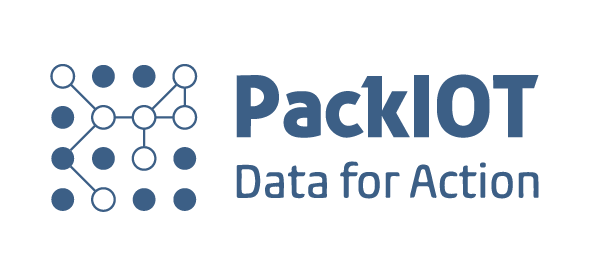Hi, I hope you are doing well.
Maybe you remember that another time we’ve talked about some traps to avoid when building your own production metrics system. As a helpful content blog (that’s our main goal), we want to talk about other situations that you might face when trying to get more insights from your factory data: how to hire a software company? Or, more specifically, how to hire a remote software company?
In 2017, an International Labor Organization study entitled “Working anytime, anywhere: The effects on the world of work” brought interesting data on remote work and how this model is changing the format for hiring companies, professionals and project teams.
This study shows that in the US, 37 percent of all workers report that they “teleworked” in 2015, which rose slightly from 30 percent during the previous decade. This proportion is four times higher than 9% of workers who did so in 1995 (Gallup, 2014; Gallup, 2016).
This guide wants to help you to be aware of different parts of the buying process, starting from the searching and finishing with the project deployment.
What is a remote software company, in this context?
We will consider a remote enterprise, in this case, a company that is not physically based in the same city as you. Furthermore, this concept will be used for companies that do more than 80% of the work remotely, even if there is a need for some local visit, at some point. Deal?
We will not take into consideration freelancers in this context. And here begins our guide’s first tip. Freelancers are interesting and affordable options for solving technological problems for your company, but usually do not have the same reliability as formal software companies (we mean, for industry technology projects). Hired through platforms like Asana or Fiverr, freelancers are professionals spread around the world who deliver digital projects. The biggest challenge is to manage these workers, besides the accounting and legal challenges of hiring them. Companies, on the other hand, work with SLA agreed by contract, which guarantees clear rules for both sides.
A revolution called “SaaS”
As we’ve started to say, hiring a remote company, in this context, means not having the need for numerous face-to-face meetings and visits with these companies, either at their headquarters or at yours. And a particular model has everything to do with hiring remote companies: SaaS.
Software as a service (SaaS) is a type of software distribution and sales. In the SaaS model, the software supplier is responsible for all the necessary structures to make the system available (servers, connectivity, information security care), and the client uses the software via Internet, paying a fee for the service – this is a general idea.
The SaaS model offers software as a service with specific purposes that are available to users on the Internet. Software systems are accessible from multiple devices through a client interface on a client-server model network such as a Web browser. In SaaS, the user does not manage the individual features of the application, except for specific configurations. Therefore, developers focus on updating rather than infrastructure, leading to the agile development of software systems.
The technology used does not determine the model. The software used can be entirely over the Internet (used via the browser) or can have some local installation (as in the case of antivirus or backup software). The main feature is not the acquisition of lifetime licenses, but the right to use the license from recurring payments, usually monthly or annually.
Compared to the traditional model of software product distribution (in which the client acquires the license of use and is responsible for installation and maintenance in production) we can highlight the following advantages of the SaaS model for clients:
- It does not require the client to create a structure and empower the professionals to keep the system running, allowing it to focus on their business
- Allows a gradual approach to implementation, starting with few licenses and expanding as you get a positive return on your investment, reducing the risks and time to ROI
- It allows you to increase or reduce licenses over time, according to the needs of the business.
- The implementation can be done with little dependence on the company’s IT teams, not competing for priority with other systems and can reduce implementation times.
How to find good and reliable remote companies?
First of all, we need to talk about one real benefit of this “80% model” mentioned above: cost/time-saving. On the other hand, a process involving many trips, 12 or 18-month assessment and long face-to-face meetings is something that usually becomes expensive for factories.
Let’s talk about the main point: how to find good and reliable remote companies? The best model of finding a good service provider will always be the good old recommendation. Search with your network, with peers from other companies or in Linkedin groups.
But…often, adopting a contract like this can be something to differentiate yourself in the market and ensure competitive advantages. And then you don’t want to ask the competitor, right?
Well, if that’s the case, there are some formats that can help you find good software companies, near or far.
There are some secrets to run a great Google search
It sounds fun, I know. But it’s true. First of all, using Google seems like a viable and fast solution. But you have to search for the right terms. Start with the pain your plant is going through, not the final solution. Example: “how to measure OEE in the manufacturing industry?” or “how to measure performance per shift. Or “production analysis in real-time”.
Companies that are really worried about solving these pains need to appear on the front page of Google and make it easy for you to find them quickly. And I repeat, it’s important to start looking for the pain. So you start the filter to see which companies are really focused on solving your pain.
You’re already doing a small screening right now. See if the contents of the site are useful if they can help you in any way, and if the information is clear enough for what you need.
Another tip, after finding 5-7 companies, is time to Google each one separately. Check if you can find good references, media materials, or highlights that show the company has a good reputation.
Free tools for worldwide recommendations
If you still wanting more options, there are some sites that can help you compare products and companies. These services, often free of charge, have a global database, by verticals, which makes it easier to search and gives an overview of the company you want to hire.

How to choose the right remote company?
Every hint of professionalism, delivery capacity, and reputation matters.
But let’s take it from the very beginning. Try to see if the company’s website is easy to navigate and to find the information you need. Second: just check if the contact buttons are simple to find (phone, message box, email or contact page).
After that, it’s time to really talk to the company. Try to describe in detail the challenge your plant is facing. If you receive a call or have a video conference, try to see if the salesperson or consultant on the other end of the line is really concerned about your challenge.
If the negotiation proceeds, see what model they have. Always try to work with a risk-sharing logic on both sides, looking for a pilot project, POC (proof of concept) or trial period. But remember, it is essential that these tests are real on your side as well. Your plant’s commitment is really important when hiring from a product or service company. Try to find a supplier that does business in a way compatible with your culture. For example, if your company has a rigorous purchase process requiring RFPs, a self-service checkout that requires you to pay with a Credit Card might not suit you. But it is also a good time to review how you can make your purchasing process easier.
And, of course: always try to ask for real cases, either in the industry in general or in your specific vertical.
How to run the project (or product)?
Take into account that hiring remote companies brings specifics that your industry needs to be able to adopt. The first challenge is to ensure that there is a specific point of contact on your company’s side. This ensures that the internal project has ownership and communication is made easier for everyone.
In technological terms, companies that work with remote products or services use simple contact systems or project management but require some degree of digital maturity. For this, the internet in your factory or office needs to have a minimum quality and not block communication tools (such as Zoom, Hangouts, Meet, Whereby, Skype, Webex). If there are restrictions, bring this information from the beginning of the project and try to adjust joint solutions on both sides.
Another issue to be taken into consideration is the communication routine. If it is a project, it is important that from the beginning a communication routine is set up to know the current status of the work. This can also be done by tools in the project management cloud, which makes it easier for all parties to be aware of the steps.
If you have a product contract, make sure that the supplier company has a regularity for communication with your plant, either via email, phone, video conferencing or any other channel. Try to engage your team on this journey, so that the work is done in the best possible way and you achieve the agreed result from the start.
Last and not least, security first. Make sure your company’s protocols are being followed at all costs.

Be aware of time zones, language, and technical support
Time zone is always a challenge. It doesn’t matter if you are in contact with family, friends or carrying out meetings with other factories around the world.
If you are in Germany and want to hire a company that is in California, for example, a few hours apart will be halfway there. That’s normal and part of a globalized world where you do business “without borders”.
But how to overcome this difficulty?
Again, communication is the key. Setting expectations is a vital point from the ground up. If technical support is extremely important, it is worth agreeing with the supplier on an extra shift from someone on his service team, if your plant runs 24 hours, for example.
Another tip is to use calendar tools and meeting time suggestion platforms.
Systems like Google Calendar, YouCanBookMe, and Calendly allow you to create spaces for people to schedule meetings. This avoids that endless email exchange with agenda availability. Another very useful tool is the TimeAndDate time zone manager. It gives you a clear view of the time zones of the people who are going to attend the meeting and lets you know which are the best options for all (if any, of course!).
Also, what language will be used by the parties involved? Factories that need the service for more than one site may have 2 or 3 languages involved in that project. Therefore, agreeing on a central language is another vital point.
If you need a visit at some point, do it
If at any time either side needs to make a visit, do so. Remember we talked up there about the 80% rule? In some cases, you have to visit the factory, understand the details. And that is perfectly natural.
With much of the work having been done remotely, all sides have already gained and increased productivity and efficiency.
A visit to close the deal or set some details is perfectly natural.
If you like the article (or not), share it with your contacts or send your questions and suggestions to our team. We want to learn and evolve with you.




